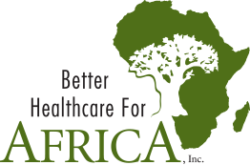In December 2010, Dr. Jerry “Chip” Lambert, medical director for why BHA supports St. Albert’s.
St. Albert’s Hospital
We drove north to St. Albert’s Hospital and arrived there about 4:30 p.m. There was no power, and we had dinner with all of the women physicians. I stayed in a thatched hut.
Tuesday, December 7, 2010
We toured the hospital, which was very typical of most rural mission hospitals. It was founded in 1964 by German Jesuit missionaries and was turned over to the local ministers in 1999, which was when Elizabeth became the medical director. Currently, they are doing acute care, preventive health, HIV education, home visits care, a malaria control program, and training 500 community-care workers as volunteers. They have built a dam on a small river on the property to collect a reservoir of water to irrigate their farm and move water up to the hospital where it is chemically treated for consumption. They have a deep bore well for water.
Elizabeth acts as medical director here and as director of the Catholic Bishops Health Commission. She has 42 hospitals and 10 clinics throughout Zimbabwe that she supervises. Five of these hospitals are also district hospitals and serve as referral centers like St. Albert’s since 1985. These district hospitals have dual roles in that they serve as government institutions as well. They receive $9,000 each year from the government for operational costs. ARVs are provided. All physicians receive $300 each month, and nurses receive about $150 per month.
The hospital does not receive any direct funding from major NGOs like the European Union or Global Fund. They get some additional funding from the Diocese of Chinhoyi to cover capital cost of buildings and equipment repairs. But most funding comes from the Ministry of Health (MoH). However, small individual donors and NGOs are allowed to give directly to the hospital.
The hospital has an executive committee that meets once each week to discuss issues. It is comprised of four physicians, the hospital administrator, nurse matron, health information officer and the pharmacy technician. In 2006, they began a nurses training program (funded by MoH) that should aid the hospital and help reduce the nursing shortage in Zimbabwe. These women physicians are incredibly resourceful and dedicated to this life-long mission. They are doing remarkable things here, and BBF should seriously consider sending them containers.
